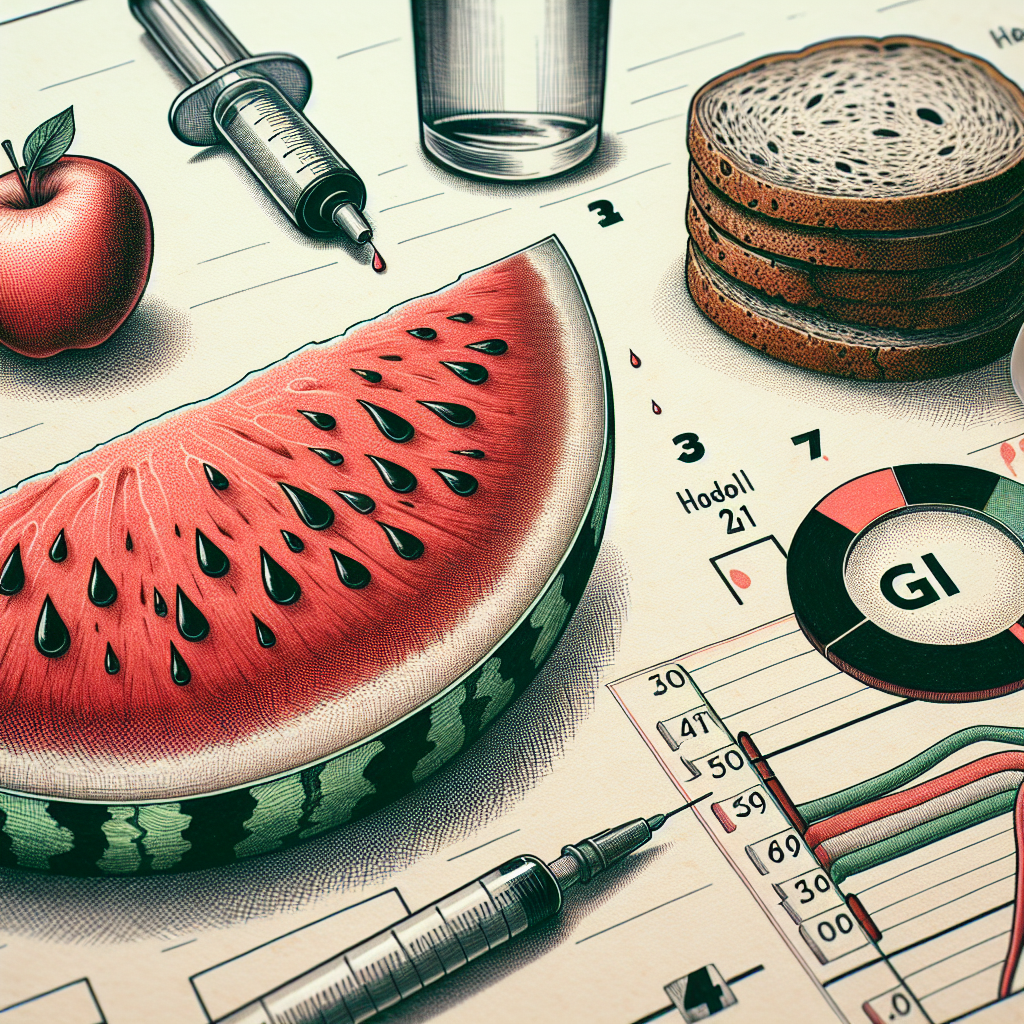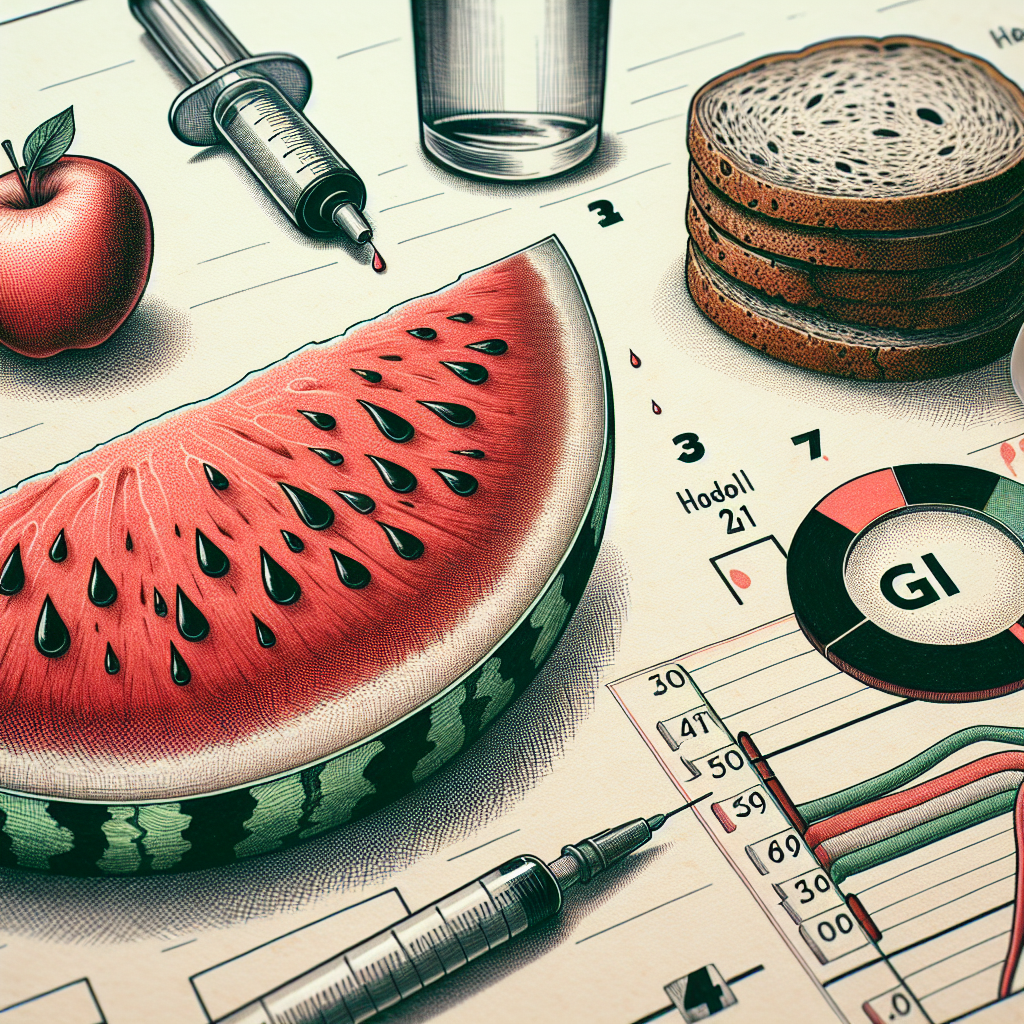Whether you’re a health-conscious individual or simply curious about maintaining a balanced diet, understanding the Glycemic Index (GI) can be incredibly valuable. In this comprehensive guide, you’ll embark on a journey to demystify the concept of the GI, exploring how it works and its significance in managing blood sugar levels. From learning about low and high GI foods to uncovering practical tips for incorporating healthier choices into your daily meals, this article offers invaluable insights that will empower you to make informed, mindful decisions about your nutrition. Brace yourself for a fascinating adventure into the world of the Glycemic Index!

What is the Glycemic Index?
The Glycemic Index (GI) is a ranking system that measures how quickly carbohydrate-containing foods raise blood sugar levels. It provides valuable information about the quality of carbohydrates in different foods and is commonly used by people with diabetes or those looking to manage their blood sugar levels. Understanding the Glycemic Index can help individuals make informed choices about the types and quantities of carbohydrates they consume. By choosing low-GI foods, you can maintain more stable blood sugar levels throughout the day, which is beneficial for overall health.
Understanding Carbohydrates
Carbohydrates are macronutrients that are broken down into glucose, which provides energy for our body and brain. There are different types of carbohydrates, including simple carbohydrates and complex carbohydrates. Simple carbohydrates, also known as sugars, are found in foods like table sugar, honey, and fruits. Complex carbohydrates, on the other hand, are made up of long chains of sugar molecules and are found in foods such as whole grains, legumes, and starchy vegetables.
How Carbohydrates Affect Blood Sugar Levels
When we consume carbohydrates, they are broken down into glucose and absorbed into the bloodstream. This causes our blood sugar levels to rise. However, different carbohydrates have varying effects on blood sugar levels. Foods with a high GI value cause a rapid increase in blood sugar levels, while foods with a low GI value result in a slower and more gradual rise in blood sugar levels. By understanding how carbohydrates affect blood sugar, we can make more informed choices about the foods we eat.
How the Glycemic Index Works
The Glycemic Index is a scale that ranks foods based on how much they raise blood sugar levels compared to a reference food, usually pure glucose or white bread. The reference food is given a value of 100, representing the maximum increase in blood sugar levels. Foods with a high GI value (above 70) are quickly digested and cause a rapid spike in blood sugar levels, while foods with a low GI value (below 55) are digested slowly, resulting in a gradual increase in blood sugar levels.

Low-GI, Medium-GI, and High-GI Foods
Foods are generally classified into three categories based on their GI value. Low-GI foods have a GI value of 55 or less and include foods like most fruits and vegetables, whole grains, and legumes. These foods are digested slowly, resulting in a slower and more stable increase in blood sugar levels. Medium-GI foods have a GI value between 56 and 69 and include foods like whole wheat products and some types of rice. High-GI foods have a GI value of 70 or higher and include foods like sugary snacks, white bread, and refined carbohydrates. These foods are quickly digested and cause a rapid spike in blood sugar levels.
Benefits of a Low-Glycemic Diet
Adopting a low-glycemic diet can have several benefits for overall health and well-being.
Controlled Blood Sugar Levels
One of the primary advantages of following a low-GI diet is the ability to maintain more stable blood sugar levels. By choosing foods that are digested slowly, you can avoid sudden spikes and crashes in blood sugar, which can help prevent insulin resistance and reduce the risk of developing type 2 diabetes.
Weight Management
A low-glycemic diet can also contribute to weight management. Foods with a low GI value tend to be more filling and satisfying, which can help control appetite and prevent overeating. Additionally, the slower digestion and absorption of carbohydrates in low-GI foods result in a more gradual release of energy, preventing energy crashes and promoting sustained energy levels throughout the day.
Improved Heart Health
Following a low-glycemic diet has been associated with improved heart health. High-GI foods can elevate triglyceride levels and reduce levels of HDL (good) cholesterol, which increases the risk of heart disease. In contrast, low-GI foods help maintain healthy blood lipid profiles, reduce inflammation, and lower the risk of heart-related conditions.
Foods with Low Glycemic Index
Including foods with a low GI value in your diet can contribute to better blood sugar management and overall health.
Fruits and Vegetables
Most fruits and vegetables have a low GI value. Options such as berries, apples, oranges, broccoli, spinach, and carrots are excellent choices. These foods are not only low in calories and high in fiber, but they also provide valuable vitamins, minerals, and antioxidants.
Whole Grains and Legumes
Whole grains, such as oats, quinoa, brown rice, and whole-wheat bread, have a lower GI value compared to refined grains like white bread and white rice. Legumes, including lentils, chickpeas, and black beans, are also low-GI options that provide a good source of plant-based protein and fiber.
Healthy Fats
While fats do not have a GI value, incorporating healthy fats into your meals can help slow down the digestion of carbohydrates and reduce their overall GI value. Healthy fats include avocados, nuts, seeds, olive oil, and fatty fish like salmon. These fats also contain essential nutrients and promote a feeling of fullness.
Foods with High Glycemic Index
Foods with a high GI value should be consumed in moderation, as they can cause rapid spikes in blood sugar levels and have negative effects on health.
Processed and Refined Carbohydrates
Many processed and refined carbohydrate-rich foods have a high GI value. These include white bread, white rice, pasta, sugary cereals, cakes, and pastries. These foods often lack essential nutrients and fiber and can lead to blood sugar imbalances and weight gain when consumed frequently.
Sugary Drinks and Snacks
Sugar-sweetened beverages like soda, energy drinks, and sports drinks are loaded with added sugars and have a high GI value. Similarly, candy, cookies, and other sweet snacks contribute to rapid blood sugar spikes and provide empty calories.
White Bread and Rice
White bread and white rice are examples of refined grains that have a high GI value. These foods are processed and stripped of their fiber and nutrients, leading to quick digestion, rapid glucose release, and subsequent blood sugar spikes.
Using the Glycemic Index for Meal Planning
Incorporating the Glycemic Index into your meal planning can help you create balanced and blood sugar-friendly meals.
Creating Balanced Meals
When planning your meals, aim to include a variety of foods from different food groups to ensure balanced nutrition. Pairing low-GI foods like vegetables, lean proteins, and healthy fats with small portions of moderate-GI or high-GI foods can help create a well-rounded and satisfying meal.
Combining Low and High GI Foods
Pairing low-GI foods with high-GI foods can help moderate blood sugar response. For example, adding healthy fats such as avocado or olive oil to a meal with carbohydrates can slow down their digestion and absorption, resulting in a smaller increase in blood sugar levels.
Portion Control
While the Glycemic Index provides valuable information about the quality of carbohydrates, portion size is also important for managing blood sugar levels. Even low-GI foods can raise blood sugar levels if consumed in large quantities, so it’s essential to practice portion control and listen to your body’s hunger and fullness cues.
Limitations of the Glycemic Index
While the Glycemic Index is a helpful tool for blood sugar management, it’s important to consider its limitations.
Effect of Individual Differences
The GI value of a food can vary between individuals depending on factors such as genetics, gut microbiome composition, and other foods consumed simultaneously. Therefore, it’s important to pay attention to individual responses to different foods and make adjustments accordingly.
Food Preparation and Cooking Methods
The way a food is cooked and processed can affect its GI value. For example, cooking pasta longer can increase its GI value compared to al dente pasta. Additionally, including fat, fiber, or acid-rich ingredients in a meal can lower the overall GI value. It’s important to keep these factors in mind when using the GI to guide meal choices.
Eating a Variety of Nutrient-Rich Foods
While the GI can be a helpful tool, it’s essential to remember that health is not solely determined by glycemic response. A well-rounded diet should include a variety of nutrient-rich foods, including fruits, vegetables, whole grains, lean proteins, and healthy fats. Nutrient density and overall dietary patterns should also be considered when making food choices.
Tips for Incorporating Low-GI Foods into Your Diet
Transitioning to a low-GI diet can be done gradually and with careful consideration.
Gradual Transition
Making small changes over time can help you incorporate low-GI foods into your diet without feeling overwhelmed. Start by replacing high-GI foods with healthier, low-GI alternatives and gradually increase the variety and amount of low-GI foods in your meals.
Reading Nutrition Labels
When grocery shopping, take the time to read nutrition labels and look for the GI values of packaged foods. Look for low-GI options and choose products that are minimally processed and free from added sugars.
Meal Prepping and Planning
Preparing meals in advance and planning your menus for the week can help ensure you have a variety of low-GI foods available. By having healthy options on hand, you are more likely to make nutritious choices throughout the day.
Conclusion
Understanding the Glycemic Index provides valuable insights into how different carbohydrate-containing foods affect our blood sugar levels. By incorporating low-GI foods into our diet, we can benefit from controlled blood sugar levels, improved weight management, and enhanced heart health. However, it’s important to remember that the Glycemic Index should be used as a tool in conjunction with other factors, such as portion control, individual differences, and overall nutrient-rich food choices, to promote a balanced and healthy lifestyle.

